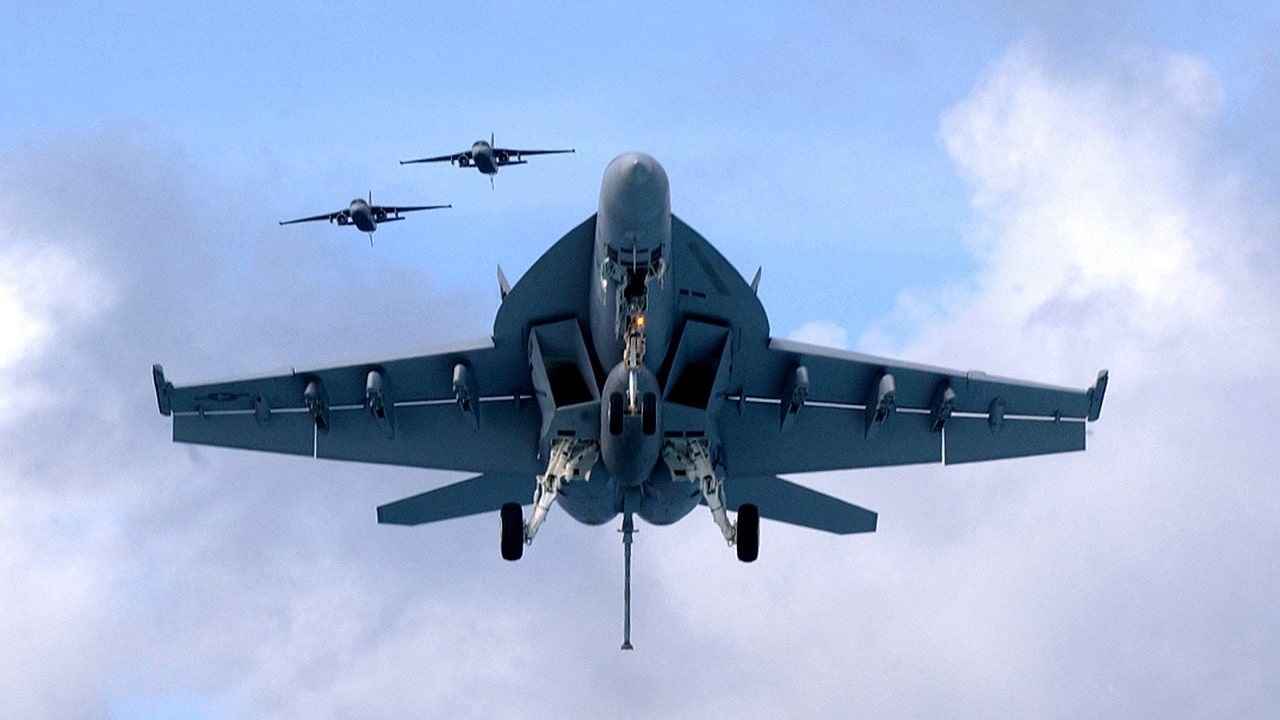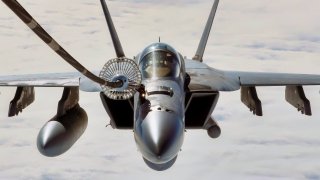The F/A-18 Hornet Is One Remarkable Aircraft Carrier Fighter Jet
The F/A-18 Hornet, a carrier-based multirole aircraft, has been a significant player in U.S. naval aviation since its introduction in 1983. Known for its versatility, the Hornet can perform both air-to-air and air-to-ground missions, reaching speeds of Mach 1.7 and carrying a variety of weapons, including AIM-9 Sidewinders and smart bombs.
Summary: The F/A-18 Hornet, a carrier-based multirole aircraft, has been a significant player in U.S. naval aviation since its introduction in 1983. Known for its versatility, the Hornet can perform both air-to-air and air-to-ground missions, reaching speeds of Mach 1.7 and carrying a variety of weapons, including AIM-9 Sidewinders and smart bombs.
-Despite being retired by the U.S. Navy and some other operators, the Hornet remains active with the Marine Corps and several international forces.
-It also paved the way for its successor, the larger and more capable F/A-18E/F Super Hornet, which offers increased range and endurance. The Hornet's dual role in combat led to the creation of the "F/A" designation, representing its fighter/attack capabilities, a legacy that continues with new naval aircraft.
The F/A-18 Hornet: Revolutionizing Naval Air Combat Since 1983
Air power shapes conflicts. It has been the bane of surface combatants and submarines since the Battle of Midway pitted the U.S. Navy against that of Imperial Japan.
Since then, the Navy has sought to develop the most durable, deadliest, and overall most effective aircraft.
Numerous models have populated the Navy’s aerial roster since America and Japan clashed in the cold waters of the Pacific Ocean in 1942. But perhaps one of the most memorable is the F/A-18 Hornet.
The F/A-18 Hornet
The F/A-18 Hornet is a carrier-based multirole aircraft that has been in service since 1983.
The F/A-18C/D, which is the current version, has a range close to 1,800 miles and a combat radius of over 1,250 miles. It can fly up to 50,000 feet and can reach speeds of Mach 1.7 (over 1,300 miles per hour).
The Hornet can carry a large number of air-to-air and air-to-ground weapons, including AIM-9 Sidewinder heat-seeking air-to-air missiles and AIM-120 Advanced Medium-Range Air-to-Air Missiles, as well as smart bombs. The aircraft also packs an M61A1/A2 Vulcan 20mm cannon for close-quarters fighting.
There have been four iterations of the aircraft (A/B and C/D), and it comes in both single- and two-seat versions.
The F/A-18 has been retired by some services and countries but remains operational with others. For example, the Navy retired its last F/A-18 Hornet squadrons in 2019, while the Royal Australian Air Force moved on in 2021. On the other hand, the Marine Corps still flies the aircraft, as do the Finnish and Spanish air forces.

The F/A-18 Hornet was a good enough aircraft to get a larger sibling. The F/A-18E/F Super Hornet built on the success of the Hornet to create a bigger and “beastier” aircraft. The Super Hornet is approximately 20% larger and weighs 15,000 pounds more than its smaller sibling. The Super Hornet also has about 33% more fuel in its internal fuel tanks, which increases operational range by close to 40% and endurance by 50%.
A Word About the “F/A” Designation
Besides its impressive capabilities, the F/A-18 Hornet is also trendmaker. It was the F/A-18 Hornet that made the Navy come up with the “F/A” designation that stands for “Fighter/Attack.”
The incident that prompted the Navy to come up with this designation took place in 1991 during the First Gulf War. A pair of Navy Hornets were on a ground attack mission against Iraqi forces when they spotted two Iraqi MiG-21 fighter jets on their radars.
As such, the Navy aircraft switched to an air-to-air mode mid-flight. They shot down the Iraqi aircraft and continued with their mission, switching back to ground attack mode. They were the first combat aircraft in modern aviation history to make that double switch. And so the “F/A” designation came to be. The trend will continue, as the Navy’s next aircraft, the F/A-XX, will use the designation.
About the Author
Stavros Atlamazoglou is a seasoned defense journalist specializing in special operations and a Hellenic Army veteran (national service with the 575th Marine Battalion and Army HQ). He holds a BA from the Johns Hopkins University and an MA from the Johns Hopkins’ School of Advanced International Studies (SAIS). His work has been featured in Business Insider, Sandboxx, and SOFREP.
Image Credit: U.S. Navy/Flickr.


